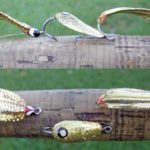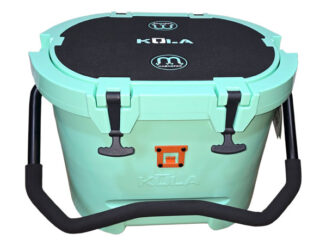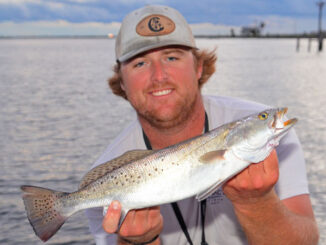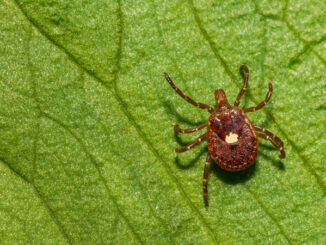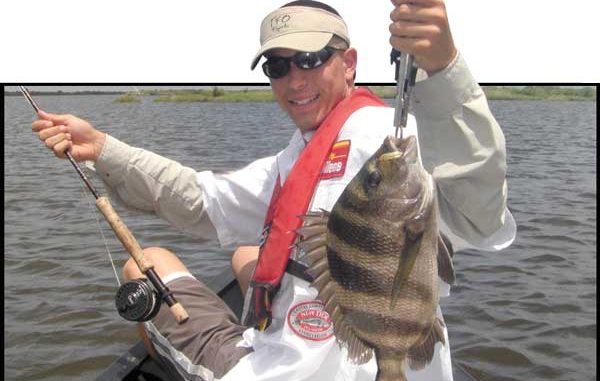
As we reach the climax of a bizarre election year, what could be more bizarre than a website dedicated to having dogs vote? Thedogvote.com believes that “our nation lies in their paws.”
It’s not the first time canine owners have tried to introduce dogs to politics. An attempt to get dogs to vote online failed miserably when the Windows application opened, and the dogs tried to stick their heads into it.
Enough of such nonsense. Let’s talk about more serious matters such as: “What if redfish could vote?”
There is the concern that they might confuse ‘chad’ with ‘shad,’ and eat all the ballots. But if they could get beyond that obstacle, I think we might be able to get reds to vote for their favorite flies.
Consider me a roaming pollster of the marsh. I bring several “candidates” in my tackle box, and offer them up to every Spottail Elvis I come across.
Based on many years of poling data — and yes, that’s with one ‘l,’ such as poling my boat through the marsh — I predict that spoon flies would be the clear winner.
In the late 1980s, Jon Cave of Indiatlantic, Fla., created the first fly version of the popular Johnson Sprite lure. The “Cave’s Wobbler” had a body of hollow mylar tubing, flattened into a spoon shape, and epoxied over. A pair of bead eyes, a tuft of kiptail and a few strands of krystal flash tied at the bend of the hook were just enough to satisfy some of the fur-and-feather purists.
To paraphrase St. Thomas, “Heresy is the infidelity of men, who having professed their faith in fly tying, corrupt its dogmas.”
When it comes to fly tying, saltwater anglers will commit any heresy if it means more fish and less time at the vise. The belief that flies must have some semblence to a natural organism — well, that dogma got run over by their karma!
Consider the many variations of the spoonfly that have emerged since Cave’s Wobbler. The popular Dupre Spoonfly is made from mylar sheeting. Another popular spoonfly is created using plastic fingernails. Other spoonflies are fashioned using metal from beer cans, cut into shape and formed with a die.
All these bodies are epoxied onto a hook. Permanent markers are used to add colors or eyes. Use of epoxy, fingernail polish or other hardener is then applied over the body.
You won’t find me losing any sleep because someone is fly casting a piece of plastic or metal epoxied to a hook. If that works for you, knock yourself out.
However, there is one caveat you need to know. Rules established by the Louisiana Outdoor Writers Assocation for the Fly Fish Division of state record top 10 lists prohibit the use of flies containing plastic or metal. If you’re going after state or world records, best use a spoonfly constructed of mylar or other approved synthetic material.
That’s not an issue for me. My own variation, the Coma Spoon, is made from mylar tubing, and already has a few records to its credit. Its origin traces back to a few months after Steve Shaddock first introduced me to the Cave’s Wobbler at a GCCA meeting in 1989.
The typical spoon fly is tied on a short hook, usually Mustad 34007, and has a fairly wide body constructed from large-diameter mylar tubing. This gives it a slow sink rate, which is great for fishing skinny-water ponds or ponds with lots of grass.
I wanted a fly that imitated my favorite redfish lure, an inline spinner, and that sank quickly. After tying several wobblers one day, I experimented and came up with a spoonfly that had more spinner characteristics.
The Coma Spoon is tied on a longer hook and with a smaller-diameter mylar. It also has a twist in the body so it spins when retrieved. The longer, narrower body and spinning action also help it to sink faster. In aquarium testing, the Coma Spoon sank twice as fast as most wobblers.
To tie this fly, you need a Mustad 34011 hook size 1, medium-diameter gold mylar tubing (or other color), and a heavy thread such as Danville’s flat-waxed nylon. Also, you’ll need some cheap hobby brushes, aluminum foil to mix epoxy, and 4-inch square sections cut from clear Ziploc bags. Make sure these sections have no markings.
Start by tying a thread base on the hook. You want the thread to be uneven with lots of bumps so the epoxy has surface area to bind. Bring the thread back to the bend of the hook.
Cut a section of mylar tubing slightly longer than the hook shank, and pull out the center cord. Slide the hollow tubing over the hook shank until the mylar hits the thread. Run the thread just into the mylar, then around the tubing, and pull tight. Make several more wraps, then tie off the thread.
Pull the front of the mylar back away from the hook eye just enough so you can start a wrap of thread behind the eye. Then run the thread just into the mylar, then around the tubing and pull tight. Make several more wraps, then tie off the thread at the hook eye.
Do several of these at once, because the next step is good for batch processing. While watching a movie or sporting event on TV, take each of these raw spoonflies, and press their bodies as flat as you can.
Next comes the first epoxy run. This is to bind the mylar to the hook and make the body razor flat. With fly in a vise, mix up a small batch of 5-minute epoxy, and immediately brush both sides of the mylar. Enclose the wet spoon in a Ziploc square. This will allow you to squeeze the epoxy into the mylar and flatten it out without getting epoxy on your fingers.
You have about 3 minutes before the epoxy starts to set. When it does, you want to continue to press your fingers firm against the Ziploc square and the mylar, until the epoxy sets and the mylar body is razor thin.
Now remove the Ziploc square, and place the spoonfly in a Styrofoam block to dry further. After about an hour, you can twist the body to give it that classic Coma Spoon shape.
The final step is also suited for batch processing. Mix up a large batch of 30-minute waterproof epoxy. I use Devcon 2-Part Clear, although West Marine brand is also excellent.
Brush the epoxy over the fly, including the thread wraps at the bend and eye of the hook. If you have a turning motor (a barbecue rotissiere motor works great) and a foam block, you can set several spoonflies to dry at once. Otherwise, you have to manually turn each fly over for about 20 minutes until the epoxy sets.
Now that you know how to tie a spoonfly, consider doing so. I’ve caught many hundreds of fish — mostly reds, drum, sheepshead and bass — on the Coma Spoon, and even baby tarpon and rainbow trout. But any variation will work as long as you remember Cormier’s Eighth Law of Flyfishing: “Any color is good for spoonflies as long as it’s gold.”

